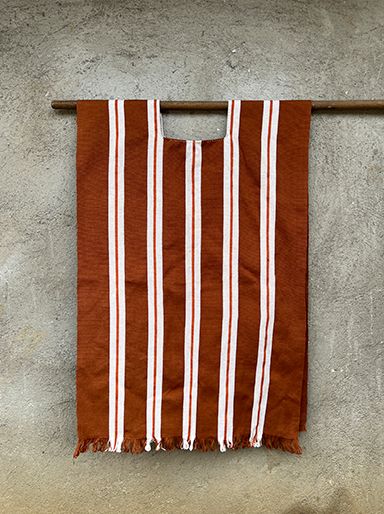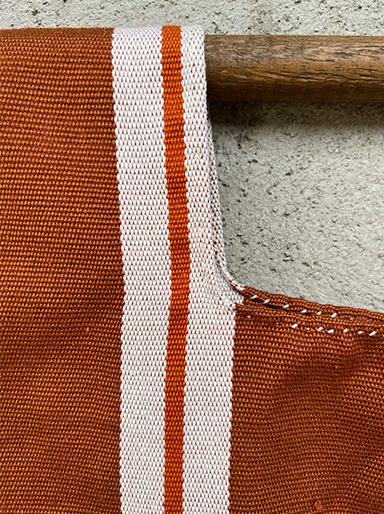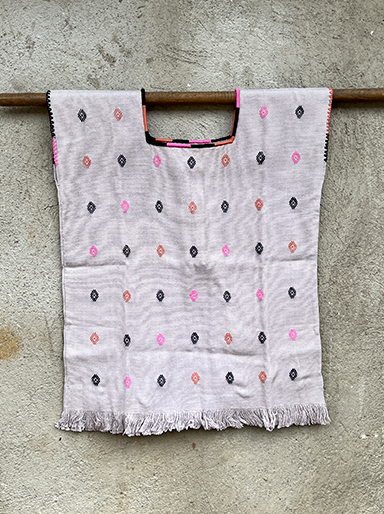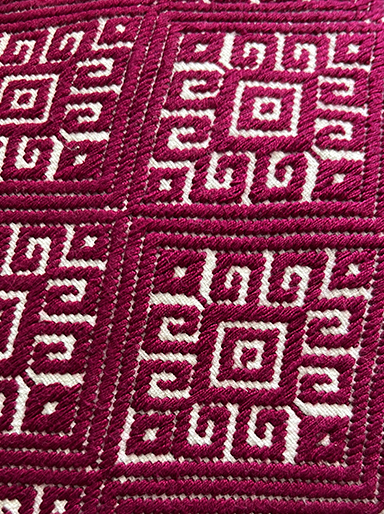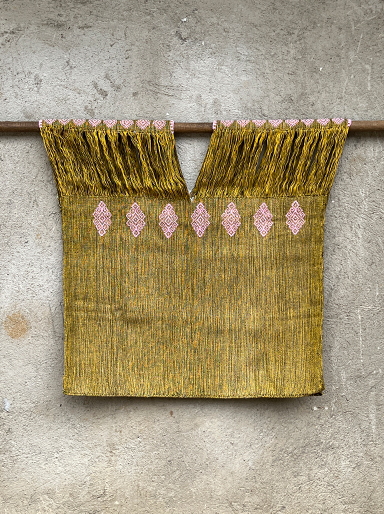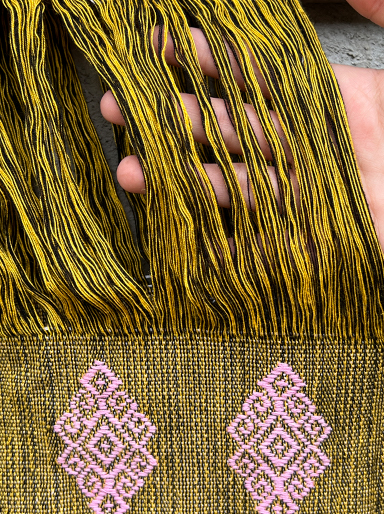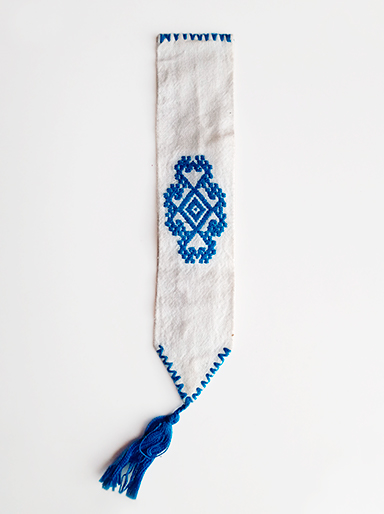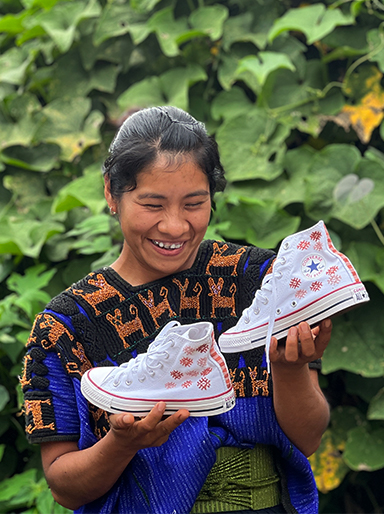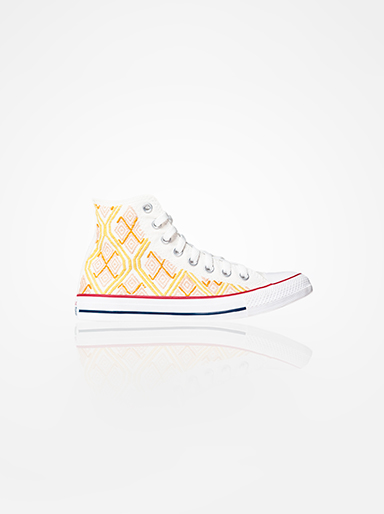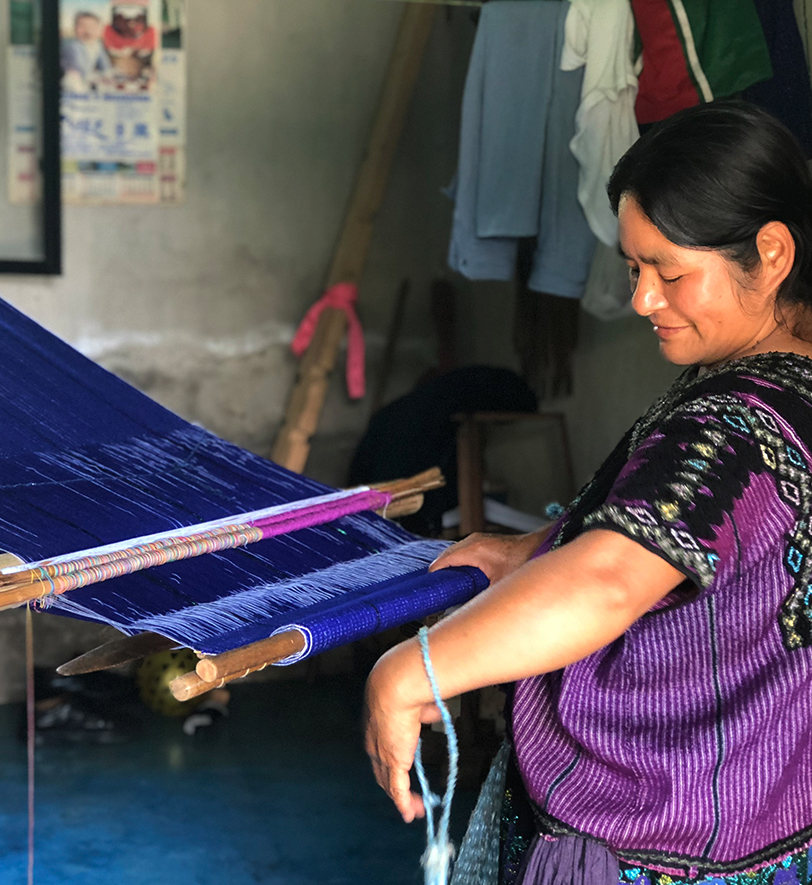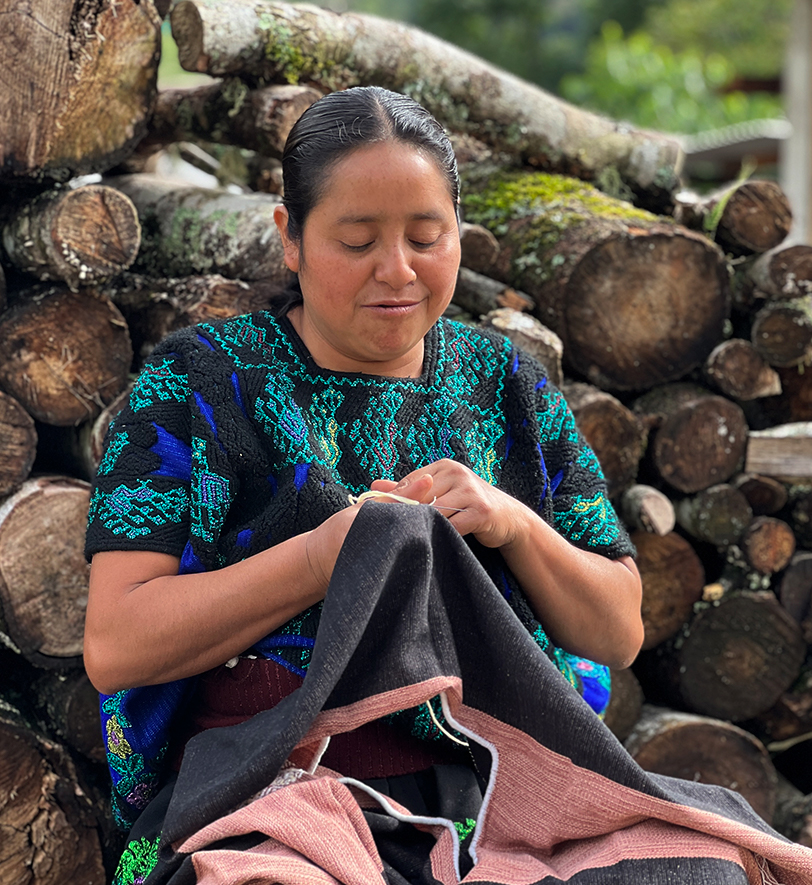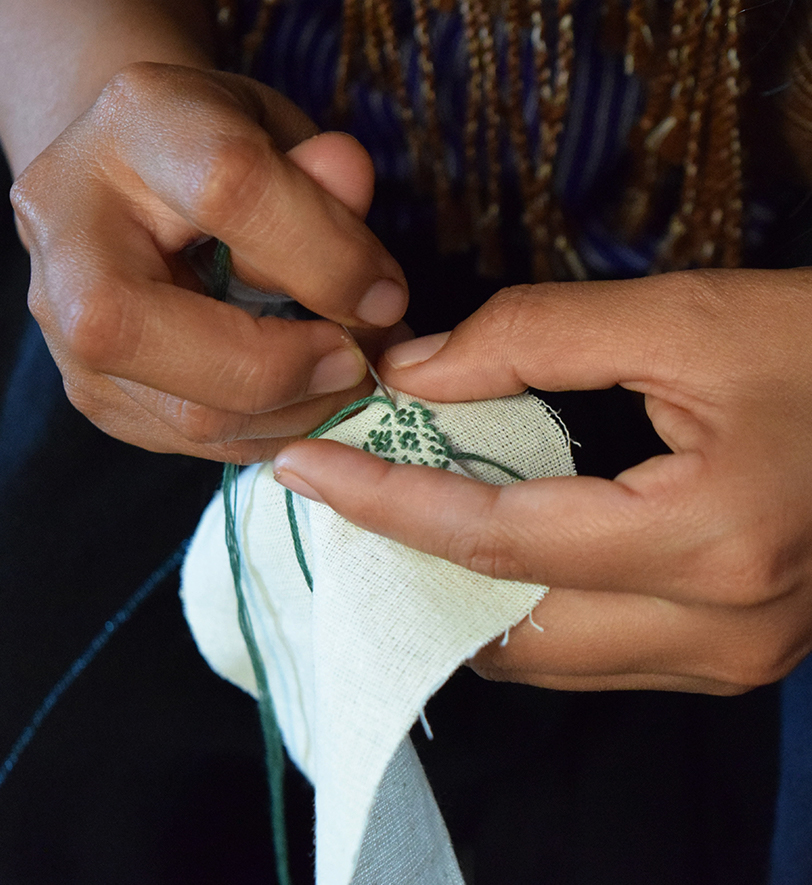History
For a century, Chenalho has been at the forefront of innovation by adapting pre-Hispanic embroideries into contemporary designs. In addition to this, there is an "annual" change of color in the huipiles (traditional blouses) within the communities, creating a sense of uniformity. Another significant change is the substitution of brocade with embroidery.
Throughout history, this technique has been exclusively practiced by women who are ready to embrace change while still honoring tradition.
Process
Creation
It all begins in the imagination, as they think about what they want to convey and then strive to accurately and symmetrically translate it onto the canvas. They can achieve this through two methods: brocade on a loom or embroidery on canvas (not necessarily on a loom).
Brocade weaving
Brocade weaving on a loom involves interlacing threads one by one to create a fabric with intricate designs within the weave. It is called a backstrap loom because the loom is tensioned by being secured to a belt around the artisan's waist.
Embroidery
To carry out the embroidery, the artisan must count the intersections of
the fabric, as the dimension and symmetry of the figures depend on it.
Thanks to their vision and skill, each thread is integrated into the
fabric using needles and stitches, creating patterns that tell a story.
Sizes, shapes, and stitches tell countless stories on different canvases.

